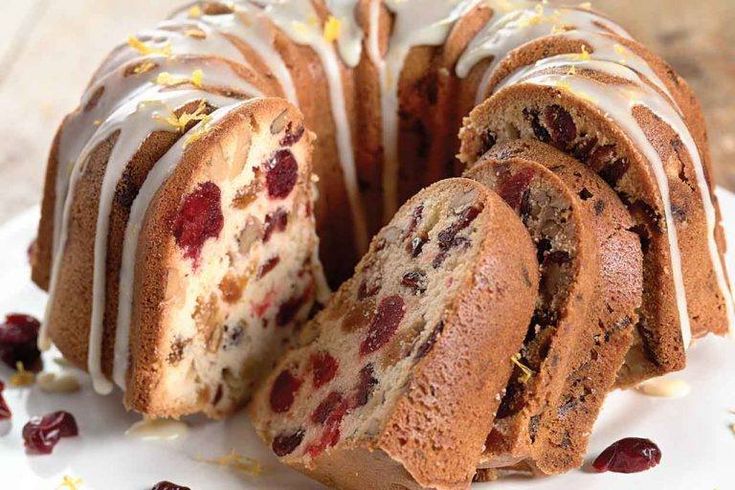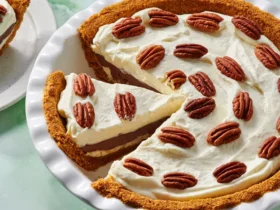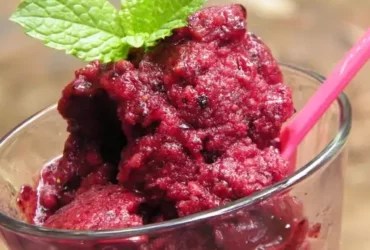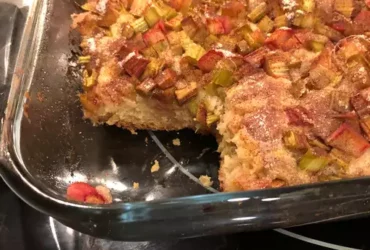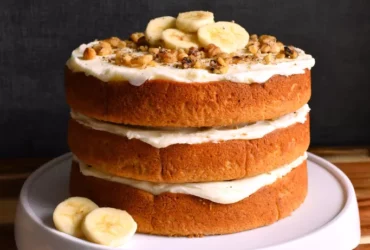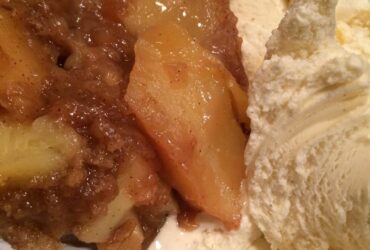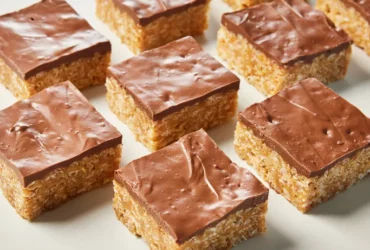Cake Recipes 101
Basic Cake Ingredients
Cake Recipes are a fundamental part of baking, and understanding the basic ingredients is essential for creating delicious and moist cakes. The key to making great cakes lies in using high-quality ingredients, proper measuring techniques, and attention to detail.
In this section, we will explore the basic cake ingredients that you will need to get started with your cake recipes. These ingredients are the building blocks of a cake, and they provide structure, flavor, and texture to your baked goods.
The Basic Cake Ingredients:
- Flour
Cake flour, also known as all-purpose flour, is a type of wheat flour that is finely milled and has a lower protein content compared to bread flour. This makes it ideal for making cakes, as it produces a tender crumb and helps to create a delicate texture.
- Sugar
Sugar adds sweetness and tenderness to your cake, while also providing structure and helping to balance the flavors of other ingredients. There are several types of sugar available, including granulated, brown, and powdered sugar.
- Eggs
Eggs play a crucial role in baking cakes, as they provide moisture, richness, and leavening power. They also help to bind the ingredients together, creating a cohesive texture and structure.
- Milk or Buttermilk
Adding milk or buttermilk to your cake recipes helps to add moisture, tenderness, and flavor. You can use either whole milk or low-fat milk, depending on your personal preference.
- Leavening Agents
Leavening agents, such as baking powder and baking soda, are added to cakes to help them rise and give them a light and airy texture. These agents release carbon dioxide gas when combined with liquid ingredients, causing the batter to expand.
- Salt
Salt adds flavor and helps to balance out the sweetness of other ingredients in your cake. Use regular salt or sea salt for added depth of flavor.
- Flavorings
Flavorings, such as vanilla extract, are added to give your cakes a unique taste and aroma. You can use either natural or artificial flavorings, depending on your preference.
- Oil or Butter
Oil or butter is used in cake recipes to add moisture, richness, and flavor. Choose from various types of oil, such as vegetable or coconut oil, or use unsalted butter for a richer taste.
All purpose Flour
All-purpose flour is a fundamental ingredient in cake recipes, providing structure and texture to the final product. It’s essential to choose the right type of all-purpose flour for optimal results.
There are different types of all-purpose flours available in the market, such as bleached, unbleached, bread flour, and cake flour. However, when it comes to cake recipes, you want to use a high-quality all-purpose flour that is specifically designed for baking cakes.
Here are some key characteristics to look for in an all-purpose flour suitable for cake recipes:
- Protein content: Look for an all-purpose flour with a protein content of around 10-12%. This will provide the necessary strength and structure to your cakes.
- Gluten development: A good all-purpose flour should have well-developed gluten, which will help your cakes rise evenly and maintain their shape.
- Neutral flavor: All-purpose flour with a neutral flavor is ideal for cake recipes, as it won’t affect the overall taste of the final product.
Some popular all-purpose flour brands that are suitable for cake recipes include:
- Bob’s Red Mill Unbleached All-Purpose Flour
- C&H All-Purpose Flour
- Gordon Food Service All-Purpose Flour
When using all-purpose flour in your cake recipes, remember to:
- Sift the flour: Sifting the flour will help remove any lumps and ensure an even texture.
- Measure accurately: Measure the flour accurately according to the recipe requirements.
- Don’t overmix: Avoid overmixing the batter, as this can result in tough cakes.
By following these tips and using high-quality all-purpose flour, you’ll be well on your way to creating delicious and tender cakes that are sure to impress your friends and family!
The foundation of a good cake, allpurpose flour provides structure and texture according to the University of California’s Extension website.
A good cake starts with a solid foundation, and that foundation begins with high-quality all-purpose flour. According to the University of California’s Extension website, all-purpose flour serves as the base for most cakes, providing both structure and texture.
The unique combination of protein, starches, and moisture in all-purpose flour allows it to perform several critical functions in cake batter. The gluten present in the flour develops a strong network during mixing, giving rise to a tender crumb while also maintaining the cake’s shape.
When working with all-purpose flour, it is essential to note that the protein content plays a crucial role in determining the final texture of the cake. In general, flours with lower protein levels (around 8-10%) tend to produce cakes with tender textures, whereas those with higher protein levels (up to 14%) can result in denser and more robust baked goods.
The moisture level in all-purpose flour is another critical factor in achieving the right balance of structure and texture. Most all-purpose flours have a moderate moisture content that helps maintain hydration and contributes to a light, fluffy crumb.
While using cake-specific flours may provide additional benefits, such as enhanced flavor or specific textures, most standard recipes rely on all-purpose flour as their primary ingredient. Understanding how this foundation of a good cake operates can help bakers create more consistent results and develop a deeper appreciation for the intricacies involved in crafting exceptional baked goods.
Sugar
Cake Recipes 101: A Comprehensive Guide to Baking Delicious Cakes
In this article, we will cover the basics of cake recipes and provide you with a step-by-step guide on how to bake a variety of delicious cakes.
Types of Cake Recipes:
- Basic Vanilla Cake: A classic vanilla cake recipe that serves as a base for many other flavors.
- Moist Chocolate Cake: A rich and decadent chocolate cake that’s perfect for chocolate lovers.
- Lemon Poppyseed Cake: A bright and citrusy lemon cake with a crunchy poppyseed topping.
Ingredients and Tools:
- All-purpose flour: The foundation of most cakes, providing structure and texture.
- Baking powder: A leavening agent that helps the cake rise.
- Baking soda: Another leavening agent that helps with browning and flavor.
- Salt: Adds depth and balance to the flavors.
- Sugar: Provides sweetness and tenderness.
- Eggs: Bind ingredients together and provide moisture.
- Vanilla extract: Enhances the flavors of other ingredients.
Basic Cake Recipe:
- Preheat your oven to 350°F (180°C). Grease two 9-inch (23cm) round cake pans and set aside.
- In a medium bowl, whisk together flour, baking powder, and salt. Set aside.
- In a large mixing bowl, beat the sugar and eggs until light and fluffy.
- Beat in butter or oil until fully incorporated.
- Alternate adding dry ingredients and vanilla extract to the wet ingredients, beating well after each addition.
- Pour batter evenly into prepared pans and smooth tops.
- Bake for 25-30 minutes or until a toothpick inserted in the center comes out clean.
Decorating Ideas:
- Buttercream frosting: A classic topping made from butter, sugar, and milk.
- Cream cheese frosting: A tangy and creamy frosting perfect for carrot cakes.
- Fruit or nut toppings: Add fresh fruit or chopped nuts to give your cake a pop of color and texture.
Common Issues:
- Dense cake: Overmixing the batter can result in a dense and heavy cake.
- Dry cake: Not using enough liquid ingredients or overbaking the cake can cause it to dry out.
- Cake collapse: Not using enough leavening agents or not baking the cake long enough can cause it to collapse.
Conclusion:
Cake recipes are a fundamental part of any baker’s repertoire. By mastering the basics and experimenting with new flavors and techniques, you’ll be well on your way to becoming a skilled baker. Remember to always follow proper baking techniques, use quality ingredients, and have fun experimenting with new ideas!
Granulated sugar adds sweetness and tenderness, but can also affect the overall texture, notes the American Society of Baking.
The world of cake recipes is a vast and wondrous place, full of possibilities and variations that can tantalize even the most discerning palate. When it comes to crafting the perfect cake, one of the most crucial elements is sugar. But not just any sugar will do – we’re talking about Granulated Sugar, the workhorse of sweeteners.
As the American Society of Baking notes, Granulated Sugar adds a crucial element to our cakes: sweetness and tenderness. This may seem like a simple benefit, but trust us when we say that it makes all the difference in the world. The perfect balance of sugar to flour is what sets apart a decent cake from an exceptional one.
But Granulated Sugar can also have a profound impact on the overall texture of our cakes. Too much sugar and our cakes can become overly dense, tough, or even soggy. On the other hand, too little sugar and they may be dull and flavorless. So how do we get it just right?
The key is to understand the different roles that Granulated Sugar plays in our cake recipes. For example, did you know that Granulated Sugar helps to strengthen the structure of baked goods? It does this by inhibiting the growth of yeast and other microorganisms, which can cause cakes to become over-proofed or collapse.
This is especially important when it comes to Butter Cakes, which rely on a delicate balance of sugar to fat to create their signature texture. Too much sugar in these types of cakes can lead to an unpleasantly tough or greasy crumb, while too little may result in a dense and dry cake.
Of course, there are many other types of cakes that require precise measurements of Granulated Sugar. From Sponge Cakes to Tortes, each type demands its own special ratio of sugar to flour to create the perfect texture and flavor.
In our next section, we’ll delve into the world of Leavening Agents – those magical ingredients that help our cakes rise to new heights. But for now, let’s take a closer look at how Granulated Sugar affects the overall structure and texture of our cakes.
One thing is certain: when it comes to cake recipes, Granulated Sugar is an essential ingredient. It adds sweetness and tenderness, but also plays a critical role in shaping the texture and consistency of our baked goods. As we explore the world of cake recipes, remember that this humble sweetener is more than just a flavor enhancer – it’s a fundamental component of what makes a truly great cake.
Unsalted Butter
Cake recipes are the foundation of any baker’s arsenal, and mastering the basics is essential for creating a wide variety of delicious treats. One of the most crucial components in cake recipes is unsalted butter, which provides moisture, tenderness, and flavor to the final product.
Unsalted butter is a type of butter that has not had any salt added to it during the churning process. This makes it an ideal choice for baking, as salt can sometimes interact with other ingredients in unpredictable ways and affect the overall taste of the cake.
The role of unsalted butter in cake recipes is multifaceted. Firstly, it serves as a lubricant that helps to release the cake from its pan after baking. Secondly, it adds moisture and tenderness to the final product, making it more palatable and enjoyable to eat. Finally, it contributes to the development of the cake’s texture and structure.
When working with unsalted butter in cake recipes, there are several tips and techniques to keep in mind. Firstly, make sure to use high-quality, fresh butter that is free from any off-odors or flavors. Secondly, ensure that you are using the correct ratio of butter to sugar, as this can affect the overall texture and consistency of the cake.
Some popular types of unsalted butter that can be used in cake recipes include European-style butter, cultured butter, and browned butter. Each of these has its own unique flavor profile and characteristics, and can add a new dimension to your cakes and baked goods.
To get started with using unsalted butter in your cake recipes, try substituting it into one of your favorite recipes. You may be surprised at how much of a difference it makes! Additionally, experiment with different types of butter and flavor combinations to create unique and delicious treats.
Some popular cake recipes that feature unsalted butter as a main ingredient include vanilla sponge cake, chocolate layer cake, and lemon poppyseed cake. These cakes are all relatively simple to make and require minimal ingredients, but yield delicious results every time.
For more advanced bakers, consider experimenting with compound butters or infused butters to add extra depth and complexity to your cakes. Compound butters can be made by mixing unsalted butter with other ingredients like herbs, spices, or cocoa powder, while infused butters involve steeping the butter in liquids like coffee or tea.
With practice and patience, you’ll become a master cake baker who can create stunning and delicious treats that are sure to impress. Remember to always use high-quality unsalted butter as the base of your recipes, and don’t be afraid to experiment with new flavor combinations and techniques.
The possibilities are endless when it comes to using unsalted butter in cake recipes, so get creative and have fun experimenting! With a little practice and patience, you’ll be whipping up beautiful cakes like a pro in no time.
The unsalted version is preferred for its mild flavor, while salted butter should be used sparingly to avoid a salty taste, warns the University of Illinois’s College of Agricultural and Environmental Sciences.
Cake recipes are a fundamental part of baking, and mastering them can elevate any baker’s skills. When it comes to cake recipes, there are several key factors to consider, including ingredient quality, proportions, and technique.
One crucial aspect of cake recipes is the type of butter used. The University of Illinois’s College of Agricultural and Environmental Sciences recommends using unsalted butter for its mild flavor. This is because salted butter can impart a salty taste to the cake if not used sparingly. Using salted butter in excess can throw off the delicate balance of flavors in the cake.
Unsalted butter, on the other hand, provides a neutral base that allows the other ingredients to shine. It also makes it easier to control the amount of salt in the recipe, which is important for achieving the right balance of flavors.
Another key consideration when it comes to cake recipes is ingredient proportion. The ratio of ingredients such as flour, sugar, and eggs can greatly affect the texture and structure of the cake. Overmixing or using too much of any one ingredient can lead to a dense, dry cake that is unpleasant to eat.
To achieve a light and fluffy texture, it’s essential to use the right proportion of ingredients and to mix them just until they come together in a smooth batter. Overmixing can also cause the gluten in the flour to develop, leading to a tough, chewy texture.
Finally, technique is also crucial when it comes to cake recipes. Proper techniques such as creaming, folding, and whipping can make all the difference in achieving the right texture and structure. Creaming involves beating together butter and sugar until light and fluffy, while folding involves gently combining wet and dry ingredients to prevent deflation.
Whipping involves beating eggs until they become light and airy, which is essential for adding volume and structure to the cake. By mastering these techniques and following a tried-and-true recipe, bakers can create cakes that are not only delicious but also visually stunning.
Cake Recipes: Sweet Treats
Moist Vanilla Cake Recipe
Cake recipes have been a staple in baking for centuries, with countless variations and flavors to suit every taste and occasion. Among the many delicious options available, sweet treats like moist vanilla cake are particularly popular due to their simplicity, versatility, and mouthwatering appeal.
Moist vanilla cake is a classic dessert that combines the richness of butter and sugar with the subtlety of vanilla extract, resulting in a tender crumb and an irresistible aroma. This recipe is perfect for special occasions like birthdays, weddings, or anniversaries, as well as everyday treats to brighten up anyone’s day.
To make this scrumptious moist vanilla cake, you’ll need the following ingredients:
- 2 cups all-purpose flour
- 1 cup granulated sugar
- 3 large eggs, at room temperature
- 2 teaspoons pure vanilla extract
- 1/2 teaspoon baking powder
- 1/4 teaspoon salt
- 1/2 cup unsalted butter, softened
To begin with the recipe, preheat your oven to 350°F (180°C) and grease two 8-inch round cake pans. Make sure to line the bottoms of the pans with parchment paper for easy removal after baking.
In a medium bowl, whisk together flour, sugar, baking powder, and salt until well combined. Set aside this dry mixture for later use.
In a large mixing bowl, cream the softened butter and granulated sugar until light and fluffy, approximately 3 minutes with an electric mixer on medium speed. This step is crucial in incorporating air into the batter and creating a smooth texture.
Next, beat in the eggs one at a time, allowing each egg to fully incorporate before adding the next. Be careful not to overmix the mixture at this stage, as it may result in a dense cake.
With your electric mixer on low speed, gradually add the dry mixture (flour mixture) to the butter mixture, alternating with the vanilla extract and ending with the flour mixture. Beat just until combined, being cautious not to overmix the batter at this stage either.
Divide the prepared cake batter evenly between the two prepared pans. Smooth the tops of each batter-filled pan using a spatula or spoon.
Bake for 25-30 minutes or until a toothpick inserted into the center of each cake comes out clean, and the edges are lightly golden brown. Remove from oven and allow to cool in the pans for a few minutes before transferring to wire racks to cool completely.
Once cooled, your moist vanilla cakes can be assembled into a layer cake by sandwiching them together with your favorite frosting or filling of choice. Enjoy!
This classic recipe combines basic cake ingredients with added extracts for a moist and aromatic crumb.
Cake recipes are an essential part of any baker’s arsenal, providing a foundation for creating a wide range of sweet treats that are perfect for special occasions and everyday indulgence.
In this recipe, we’ll be combining basic cake ingredients with added extracts to create a moist and aromatic crumb that is sure to impress. This classic recipe is versatile and can be tailored to suit various tastes by incorporating different flavors and mix-ins.
Here’s what you need:
- All-purpose flour: Provides structure and texture to the cake. Use a high-quality, unbleached flour for the best results.
- Granulated sugar: Adds sweetness and tenderness to the crumb.
- Contributes moisture, richness, and structure to the cake.
- Adds a tangy flavor and helps to balance the sweetness of the sugar.
- or melted unsalted butter: Provides moisture and tenderness to the crumb.
- or other extracts of your choice: Add a unique flavor dimension to the cake.
- salt: Balances the sweetness of the sugar and enhances the flavors of the other ingredients.</strongsalt<>
To make the cake, follow these steps:
- Powder your flour, granulated sugar, baking powder (if using), and salt in a large mixing bowl. Whisk to combine until well incorporated.
- Crack in the eggs one at a time, whisking well after each addition to ensure they’re fully incorporated before adding the next.
- Add the milk or buttermilk, oil or melted butter, and vanilla extract (or other extracts of your choice) to the mixing bowl. Whisk until smooth and creamy.
- Divide the batter evenly between two 8- or 9-inch round cake pans. Smooth the tops with a spatula and bake for 25-35 minutes, or until a toothpick inserted into the center of each cake comes out clean.
Once the cakes are cool, you can frost and decorate them as desired using your favorite frosting recipe. Enjoy!
Vanilla Extract
The world of cake recipes is a vast and wondrous place, filled with endless possibilities for sweet treats that delight the senses and bring joy to all who partake.
At the heart of many of these beloved creations is vanilla extract, an essential ingredient that adds depth, warmth, and a hint of sweetness to the rich tapestry of flavors found in cakes of all kinds.
The art of using vanilla extract in cake recipes involves understanding its subtle nuances and leveraging them to bring out the best in each and every dessert.
Vanilla extract, derived from the seed pods of the vanilla orchid, has a long history dating back thousands of years. Native cultures prized it for its medicinal properties, flavor-enhancing qualities, and allure as an aphrodisiac.
The ancient Mayans, Aztecs, and Greeks were among those who valued vanilla extract for its unique ability to transport the senses to a realm of bliss and tranquility.
As European explorers discovered and adopted vanilla extract, bakers and chefs began experimenting with it in cakes, pastries, and other sweet treats. The results were nothing short of magical.
The distinctive flavor profile of high-quality vanilla extract has been the subject of much scientific study. Vanilla is characterized by its unique blend of aromatic compounds, including vanillin, which is responsible for its iconic taste.
When using vanilla extract in cake recipes, it’s essential to strike a balance between this delicate flavor and other ingredients that can overpower it. Sugar, butter, milk, or eggs may dominate the palette if not carefully balanced with judicious amounts of vanilla extract.
However, when executed correctly, the synergy between vanilla extract and complementary flavors produces an unforgettable culinary experience that transcends mere pleasure to evoke memories, emotions, and a deep connection to tradition.
Cake recipes employing vanilla extract range from simple tea cakes to intricate multi-tiered masterpieces adorned with buttercream frosting, sugar decorations, or other embellishments. They come in countless flavors – classic vanilla, chocolate-dipped, fruit-infused, or even spicy – offering endless variety for dessert enthusiasts and aficionados alike.
Despite this rich diversity, the fundamental magic of cakes relies on their ability to evoke a shared sense of wonder and joy across cultures, communities, and generations. At their core, they represent love, friendship, celebration, and sharing in all its forms – whether as gifts, expressions of gratitude, or simple indulgences.
Cake recipes incorporating vanilla extract tap into this deeper significance while satisfying our taste buds with a unique blend of flavors that is both timeless and ageless.
A highquality vanilla extract can elevate the flavor of this cake, recommends the Culinary Institute of America.
Cake recipes have been a staple in bakeries and home kitchens for centuries, with various types and flavors to suit different tastes and occasions. Among the many options available, sweet treats such as vanilla cakes, chocolate cakes, and red velvet cakes remain popular choices for birthdays, weddings, and other celebrations.
A high-quality vanilla extract can elevate the flavor of this cake, recommends the Culinary Institute of America. The institute suggests using real vanilla beans or a premium quality vanilla extract to get the best flavor out of your vanilla cake recipe. This is because vanilla extract adds a deep, rich flavor that complements other ingredients in the cake.
The importance of using high-quality vanilla extract cannot be overstated. Many commercial vanilla extracts contain fillers and artificial flavorings that can give the cake an unpleasant taste or aftertaste. In contrast, real vanilla beans or premium quality vanilla extract will provide a more complex and nuanced flavor profile that enhances the overall experience of eating your homemade cake.
When selecting a vanilla extract for your recipe, look for one that is 100% pure vanilla with no added sugars, artificial flavors, or preservatives. You can also consider using other types of extracts like almond or lemon to create unique flavor combinations. However, remember that these additional ingredients may change the texture and appearance of your cake.
Another essential component in many cake recipes is buttermilk. The acidity in buttermilk helps react with baking soda to produce a light and fluffy texture. If you don’t have buttermilk on hand, you can make a substitute by mixing one cup of milk with one tablespoon of white vinegar or lemon juice. Let it sit for five minutes before using it in place of regular milk.
When measuring ingredients for cake recipes, accuracy is crucial to achieve the desired texture and consistency. Use a digital kitchen scale or measuring cups to ensure that you’re not over- or under-measuring any ingredient. This will prevent your cake from being too dense or too light.
Cake decorating is also an essential aspect of making a stunning cake. You can use store-bought frostings, icings, or make your own using powdered sugar and butter or cream cheese. When applying the frosting or icing to the cake, remember to work slowly and evenly, allowing each layer to set before adding additional details.
Finally, don’t be afraid to experiment with different flavors, textures, and decorations in your cake recipes. With a little creativity and patience, you can create truly unique and impressive sweet treats that will delight your friends and family.
Eggs
Cake recipes are an essential part of any baker’s arsenal, providing a wide range of options for creating delicious sweet treats that are perfect for special occasions or everyday indulgence. At the heart of many cake recipes lies the humble egg.
Eggs play a crucial role in cake making, serving as both a leavening agent and a binding agent. The protein and fat present in eggs help to strengthen the structure of the cake, while their water content contributes to its moisture level. When combined with other ingredients such as flour, sugar, and butter or oil, eggs help to create a tender, yet stable crumb.
One of the most fundamental aspects of cake recipes is the ratio of eggs to other ingredients. Too few eggs can result in a dense, flat cake, while too many may lead to an overly rich or heavy texture. The ideal ratio will depend on the specific recipe and type of cake being made, but as a general rule, three large eggs are often used per two cups of flour.
When using eggs in cake recipes, it is essential to note that their freshness can have a significant impact on the final product. Eggs that are past their expiration date or have been stored for an extended period may not provide the same level of lift and moisture as fresher eggs. For this reason, many bakers prefer to use room-temperature eggs when making cakes.
Another critical aspect of using eggs in cake recipes is their handling. Overmixing egg-based ingredients can lead to a tough or dense crumb, so it’s essential to mix wet and dry ingredients separately before gently folding them together. This helps to preserve the delicate texture of the eggs while preventing overdevelopment of the gluten in the flour.
Some popular types of cakes that rely heavily on eggs include genoise, angel food cake, and sponge cake. These recipes typically feature a high ratio of eggs to other ingredients, which gives them a light, airy texture and a delicate crumb. In contrast, dense cakes like pound cake or bundt cake often use fewer eggs, relying instead on the moisture from butter or oil to create their signature texture.
Overall, eggs are an essential component in many cake recipes, providing structure, moisture, and flavor to a wide range of sweet treats. By understanding the role of eggs and using them effectively, bakers can create delicious, moist cakes that are sure to please even the most discerning palate.
Room temperature eggs ensure even mixing and a tender crumb, according to the American Egg Board.
Cake recipes have been a staple in baking for centuries, and with the right ingredients and techniques, they can be transformed into delicious sweet treats that delight both children and adults.
The foundation of any good cake recipe starts with high-quality eggs.
Eggs serve multiple functions in baked goods, including moisture, richness, leavening, and structure. According to the American Egg Board, using room temperature eggs is crucial for even mixing and a tender crumb.
When eggs are at room temperature, they mix more smoothly with sugar and other ingredients, resulting in a cake that is light and fluffy rather than dense and heavy.
To achieve room temperature eggs, simply remove them from the refrigerator about 30 minutes before using. This allows the eggs to come to the same temperature as the surrounding environment.
Now, let’s take a look at some general tips for making delicious cakes:
- Use high-quality ingredients that are fresh and of good quality.
- Don’t overmix the batter, as this can result in a dense cake that is unpleasant to eat.
- Use the right type of sugar – white or brown – depending on the recipe and personal preference.
- Don’t open the oven door too often while the cake is baking, as this can cause it to sink or not cook evenly.
- Let the cake cool completely before serving or storing. This will help the cake hold its shape and prevent moisture from accumulating and making the cake soggy.
Some popular types of cakes include:
Vanilla Cake: A classic recipe that is simple to make and always a crowd-pleaser, vanilla cake is made with vanilla extract and sugar for a sweet flavor profile.
Chocolate Cake: For chocolate lovers out there, this type of cake is perfect. Made with cocoa powder or melted chocolate for added depth of flavor, it’s moist and decadent.
Carrot Cake: This type of cake is made with grated carrots, chopped nuts, and spices like cinnamon and nutmeg for a unique flavor profile that’s both sweet and savory.
These are just a few examples of the many types of cakes that exist. Whether you’re looking for something simple or elaborate, there’s sure to be a recipe out there that suits your tastes.
Cake Recipes: Fancy Flavors
Chocolate Lava Cake Recipe
Cake recipes have been a staple in baking for centuries, providing endless opportunities for creativity and experimentation in the kitchen. One of the most sought-after flavors is chocolate, and for good reason – it’s rich, decadent, and indulgent. In this article, we’ll delve into the world of fancy flavors and provide a recipe for a classic chocolate lava cake that’s sure to impress.
The term “fancy flavors” refers to unique and creative combinations of ingredients that elevate traditional baked goods to new heights. From rose-petal infused pound cake to lemon-verbena infused cheesecake, these flavors are perfect for special occasions or simply when you want to try something new and exciting.
When it comes to chocolate, there’s no shortage of options. From dark, velvety smooth to light, airy mousse, the possibilities are endless. And then there’s the lava cake – a rich, gooey center surrounded by a delicate crust that’s simply irresistible.
The recipe below is for traditional French-style lava cakes, made with high-quality dark chocolate and topped with a sprinkle of powdered sugar. These babies are sure to impress at your next dinner party or special occasion.
Ingredients:
- 1 cup (200g) dark chocolate chips (at least 70% cocoa)
- 1/2 cup (100g) unsalted butter, at room temperature
- 1 cup (200g) granulated sugar
- 4 large eggs
- 2 teaspoons pure vanilla extract
- 2 3/4 cups (315g) all-purpose flour
- 1 teaspoon salt
Instructions:
- Preheat your oven to 425°F (220°C). Butter four 6-ounce ramekins and dust them with sugar.
- Melt the chocolate chips in a double boiler or in the microwave in 30-second increments, stirring between each interval until smooth. Let cool slightly.
- In a medium bowl, whisk together the flour, salt, and granulated sugar.
- Whisk the eggs and vanilla extract in a separate bowl.
- Add the dry ingredients to the egg mixture and whisk until just combined.
- Pour in the melted chocolate and whisk until smooth.
- Divide the batter evenly among the prepared ramekins, filling them about 3/4 of the way full.
- Bake for 12-15 minutes or until the edges are set but the centers are still slightly jiggly.
- Remove from the oven and let cool in the ramekins for 1 minute before running a knife around the edges to loosen. Invert onto plates and dust with powdered sugar, if desired.
Enjoy your rich, gooey, and utterly decadent chocolate lava cakes – perfect for any occasion or simply when you need a little indulgence in life.
This decadent recipe combines rich chocolate with molten centers for an indulgent treat.
- Cake recipes are a staple of any baker’s repertoire, and when it comes to fancy flavors, there’s no shortage of options.
- In this article, we’ll take a closer look at some of the most decadent and indulgent cake recipes out there, featuring rich chocolate and molten centers that are sure to impress.
- Whether you’re looking for a show-stopping dessert to serve at your next dinner party or simply want to treat yourself to something special, these fancy flavor cake recipes are sure to hit the spot.
- So let’s get started and take a look at some of our favorite cake recipes that feature rich chocolate and molten centers.
Fancy Flavors: Chocolate and Molten Centers
This decadent recipe combines rich chocolate with molten centers for an indulgent treat. The combination of dark, velvety chocolate and gooey, sweet centers is a match made in heaven, and the perfect way to satisfy any sweet tooth.
What You Need
- 2 cups all-purpose flour
- 1 cup granulated sugar
- 6 ounces high-quality dark chocolate, broken into small pieces
- 1/4 cup unsalted butter, softened
- 2 large eggs
- 2 teaspoons pure vanilla extract
- Molten centers (see below)
Molten Centers
The molten centers of this cake recipe are what truly make it special. To make the molten centers, you’ll need to mix together a few ingredients, then pour them into small ramekins and freeze until solid.
- 1 cup heavy cream
- 2 tablespoons unsalted butter, softened
- 1 teaspoon pure vanilla extract
- 1 cup granulated sugar
To Make the Cake
- Preheat your oven to 375°F (190°C). Grease and flour three 9-inch round cake pans.
- In a medium-sized mixing bowl, whisk together the flour, sugar, and cocoa powder. Set aside.
- In a large mixing bowl, using an electric mixer, beat together the butter and chocolate until smooth and creamy.
- Add the eggs one at a time to the mixture, beating well after each addition. Beat in the vanilla extract.
- Gradually add the dry ingredients to the wet ingredients, beating until just combined.
- Pour the batter evenly into the prepared pans and smooth the tops.
To Make the Molten Centers
- Mix together the heavy cream, butter, vanilla extract, and granulated sugar in a small bowl until well combined.
- Pour the mixture into small ramekins or cupcake liners. Place on a baking sheet lined with parchment paper.
- Freeze for at least 2 hours or overnight.
To Assemble
- Once the cakes are baked and cooled, place one cake layer on a serving plate or cake stand. Spread a dollop of whipped cream on top of the cake, then top with a molten center.
- Repeat with the remaining two layers, spreading a dollop of whipped cream between each layer, and topping with a molten center.
This decadent cake recipe is sure to impress your family and friends. The rich chocolate and gooey molten centers are the perfect combination for anyone with a sweet tooth.
Bittersweet Chocolate Chips
Cake recipes are a staple in many bakeries and home kitchens around the world, with numerous variations and flavor combinations to satisfy diverse tastes. When it comes to creating something truly special, incorporating fancy flavors into your cake recipe can elevate its status from ordinary to extraordinary.
Among the wide range of flavor options available, bittersweet chocolate chips stand out for their rich, intense taste and versatility in pairing with other ingredients. Combining these dark chocolate chips with complementary flavors creates a harmonious balance that can impress even the most discerning palates.
To craft an exceptional cake recipe featuring bittersweet chocolate, consider combining it with fruits such as raspberries or strawberries for a sweet and tart contrast, or with nuts like walnuts or pecans for added crunch. The earthy flavor of espresso powder can also complement the boldness of bittersweet chocolate, creating a mocha-inspired treat.
For those who prefer more subtle flavor combinations, pairing bittersweet chocolate chips with spices such as cinnamon or nutmeg offers an intriguing twist on traditional cake recipes. The warmth and depth these spices bring can create an appealing balance to the dark richness of the chocolate.
In addition to selecting a suitable combination of flavors, don’t overlook the importance of using high-quality bittersweet chocolate for your cake recipe. Look for brands with minimal added sugars and no artificial flavorings to ensure that the natural depth of the chocolate shines through in your finished product.
When preparing your cake batter, remember to carefully fold in the bittersweet chocolate chips to avoid crushing them or creating an uneven texture. This attention to detail will help preserve the distinct flavors and textures you’ve worked so hard to achieve.
Finally, don’t be afraid to experiment with different types of fancy flavors, such as bittersweet chocolate chips combined with lemon or orange zest for a refreshing twist on traditional cake recipes. By pushing the boundaries of what’s possible in cake design and flavor combination, you can create truly unique and memorable desserts that will impress friends and family alike.
Remember to store your finished cakes properly to preserve their texture and flavor, using an airtight container to keep moisture and air out of the mixture. This attention to detail will help extend the shelf life of your creations and ensure they remain as delicious and impressive on the day of serving as when first baked.
Highquality bittersweet chocolate provides depth and complexity to the lava filling, advises the University of Michigan’s School of Hotel Administration.
The art of creating exquisite cake recipes has evolved significantly over the years, with bakers and chefs constantly pushing the boundaries of flavor and presentation. One key aspect that sets apart exceptional cakes from the rest is the use of high-quality ingredients, particularly when it comes to incorporating rich and decadent flavors.
According to the University of Michigan’s School of Hotel Administration, high-quality bittersweet chocolate provides depth and complexity to the lava filling. This statement underscores the importance of selecting premium chocolate products that possess a robust flavor profile, as opposed to using lower-grade alternatives that may compromise on taste.
The addition of bittersweet chocolate not only elevates the overall flavor experience but also adds an intriguing dimension to the cake. The bitterness and richness of the chocolate melt seamlessly into the lava filling, creating a harmonious balance of flavors that delight the palate.
When it comes to creating fancy flavors, the possibilities are endless, limited only by one’s imagination and creativity. Bakers can experiment with a variety of ingredients such as nuts, dried fruits, spices, and citrus zest to craft unique and tantalizing flavor combinations.
The key to mastering cake recipes lies in understanding the nuances of each ingredient and how they interact with one another. By selecting high-quality ingredients and experimenting with innovative flavor pairings, bakers can create truly show-stopping cakes that impress even the most discerning palates.
- Best Datanyze Alternatives for 2025 - April 24, 2025
- Best Hunter.io Alternatives for 2025 - April 22, 2025
- Best Lead411 Alternatives for 2025 - April 22, 2025

